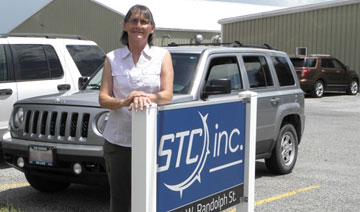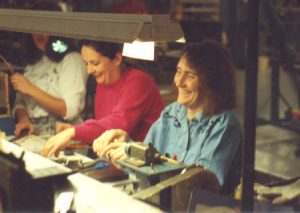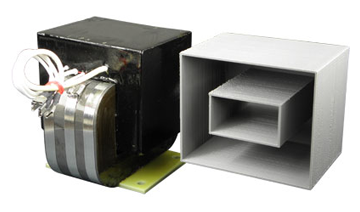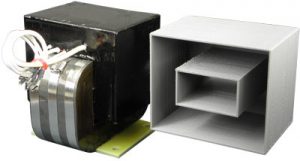
Linda Shaw Celebrates 30 Years
Having started work at STC in June of 1988, Production Supervisor Linda Shaw celebrates 30 years at STC this week.
“When I started at STC, I had five kids in grade school. Now I have four grandkids who have graduated from high school,” Shaw said.
Linda started work at STC in transformer production, which is where she has spent her entire career in positions of increased responsibility. Prior to coming to STC, she spent about three years working at a shoe factory. While the type of production work at STC was much different, Linda says there were many other elements that carried over.
“Making shoes is quite a bit different than making transformers, but there were many things I was able to bring with me to STC,” Shaw said. “Being on time, being dependable, quality as an expectation, respecting your fellow workers, and respecting your customers, those are all very important no matter where you work.”

Linda was mentored early on by the Plant Manager Bob Simpson. During this time, she learned nearly every single aspect to building the many different custom transformers produced at STC. After about six years, Linda became a Team Leader, responsible for training her production group on the various transformer lines being built by the team.
“Linda was kind of like the lead for a long time anyway,” says Vice President of Operations Angie Calkin. “She had the personality and aptitude to understand the process—and she had a good work ethic.”
Linda was named Production Supervisor two or three years later, a job she’s held ever since. However, despite her experience and leadership roles, Linda didn’t necessarily feel ready for the additional responsibilities.
“I didn’t really feel qualified. I took the responsibility and learned as I went,” Shaw said. “I wasn’t outgoing so I had to learn how to open up and how to give orders. I learned to delegate too, so the work could be shared by the whole team.”

Has production work changed in the past 30 years?
“Things are much different,” says Shaw. “Technology has made things easier and faster, things like automatic winders, solder machines, and testing equipment.”
Linda’s not the type of person you’d guess has been at STC for 30 years though. She’s quick to smile and laugh, a little feisty, and still very much focused on getting the job done quickly and with quality.
Regarding her time at the shoe factory before coming to STC, Linda reflected on the values that have served her and her coworkers well.
“I was basically taught the same things there that I try to teach here. If you were buying the product, what would you expect—quality. It’s the golden rule really.”
STC President Brad Cross finds it easy to express his appreciation.
“Linda’s the kind of staff member every manager wants on their team. Her skills and leadership are second to none.”
Thanks for your hard work and friendship Linda, and best wishes for the next 30 years!

3D Printing Benefits STC Customers
For a number of years, STC engineers have utilized 3D printing in a variety of ways to cut down on both production costs and lead times. In some cases, 3D printing can save thousands of dollars in tooling costs during the design phase. In other cases, the 3D-printed assembly components can be used in the final design and no further tooling charges are necessary.
Design engineer Les Vaughn says one of the best times to benefit from 3D printing is during initial product development.
“As an example, take an encapsulation cup for a transformer,” says Vaughn. “These cups are used as a mold for the epoxy that actually encapsulates the wires. If the cup size we need for a custom design isn’t available as a stock item, it’s faster and less expensive to 3D print the cup than having them fabricated and shipped to us.”

3D printing is also utilized for coil winding forms. The form provides a rigid surface around which wire is wound. In many cases, the form is made out of square tubes of Mylar or craft paper. However, specialty designs may require a custom form, and 3D printing offers a quick and cost-effective method for building that form.

STC engineers also utilize 3D printing for electronics design and assembly. One particular STC product consists of circuit boards mounted to a face plate with interface controls. While looking for alternate brackets for mounting the PC boards to the face plate, CAD Technician Leslie Hopkins was able to quickly design and 3D print a face plate and PC boards with relocated mounting holes. This enabled her to easily test a number of different bracket styles.

Hopkins feels 3D-printing offers the best opportunity to test the final assembly and fit.
“It gave me a chance to test some different types of brackets to make sure they were secure, and to then make sure the assembled model fit in the cabinet rack where the final product is installed,” Hopkins said.
There are still other applications where 3D printing has been beneficial, such as in making fixtures to assist in electronics and magnetics assembly. However, the main benefits of each of the various 3D-printing applications remain the same.
“It comes down to speed, cutting down on lead times, more design iterations so we can design toward the highest possible quality,” says STC President Brad Cross. “And, of course, when you cut down on time, you also reduce cost.”

